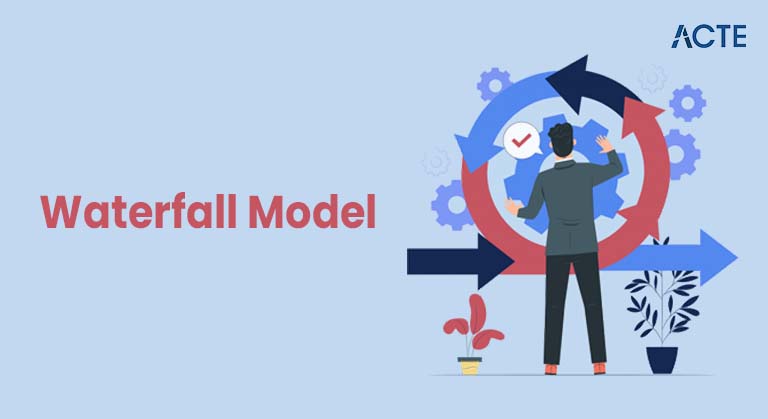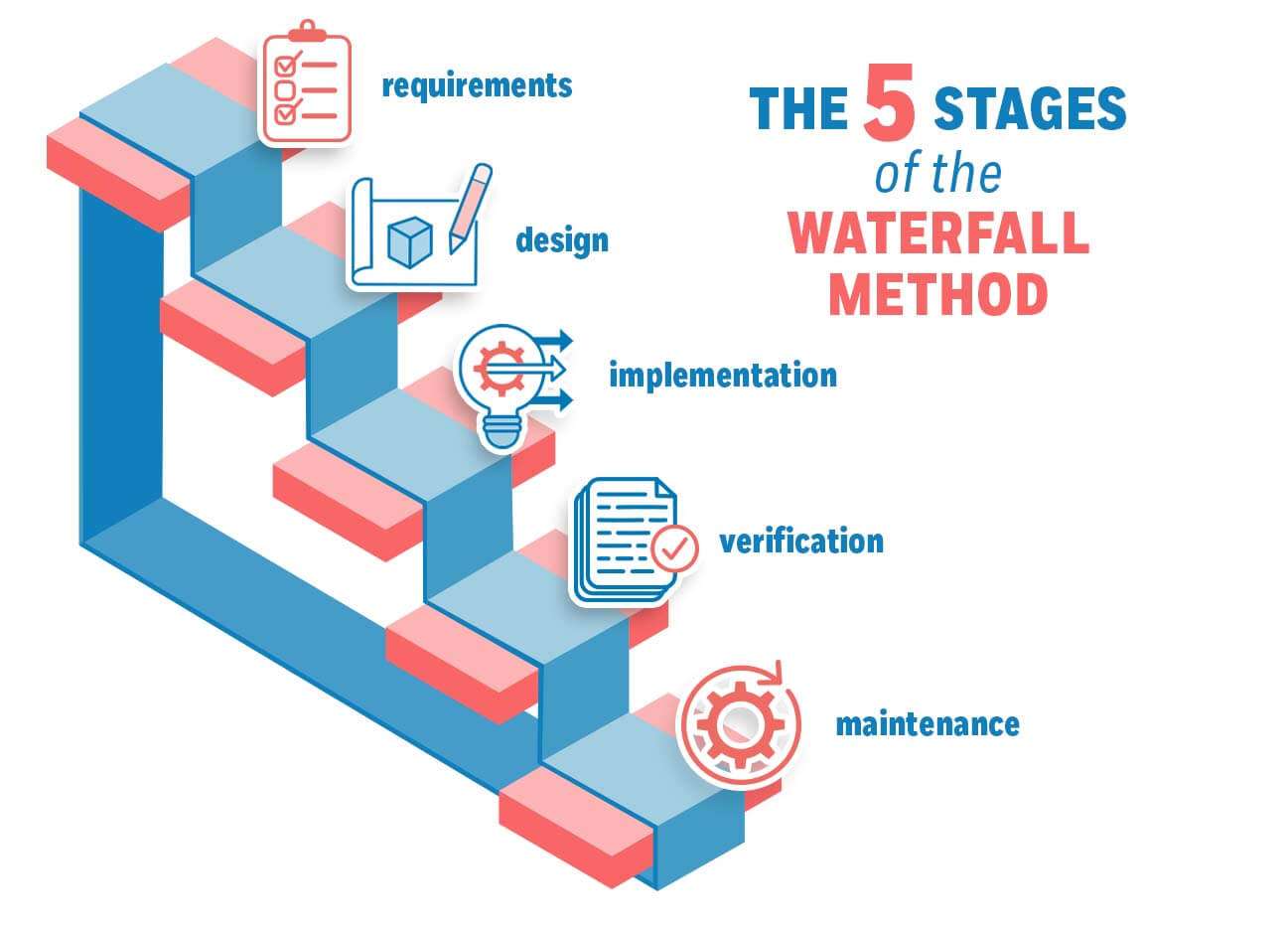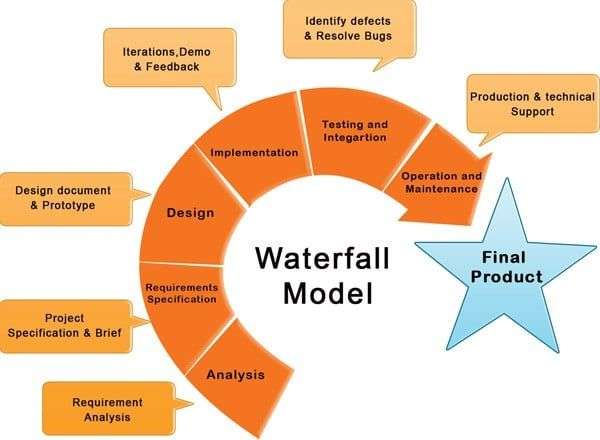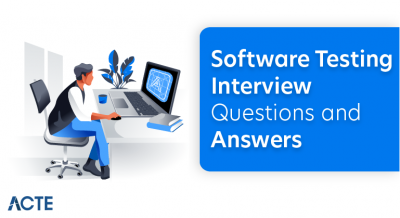
- Introduction to the Waterfall Model
- History and Evolution
- Key Phases of the Waterfall Model
- Advantages of the Waterfall Model
- Disadvantages of the Waterfall Model
- Use Cases and Suitability
- Comparison with Agile and Other Models
- Conclusion and Final Thoughts
Introduction to the Waterfall Model
The Waterfall Model is one of the earliest and most traditional approaches in software engineering, where development flows sequentially through clearly defined phases requirements, design, implementation, testing, deployment, and maintenance. Each phase must be completed before the next begins, making it a linear and structured method. This model is ideal for projects with well-understood requirements and minimal changes expected during the development cycle. When comparing Waterfall and Agile methodologies, the Waterfall approach offers simplicity, clear documentation, and ease of management, but it lacks flexibility, especially in adapting to evolving client needs. The Waterfall Model advantages and disadvantages depend largely on the project type: while it’s beneficial for fixed-scope projects, it can be problematic in dynamic environments due to its rigid structure. In contrast, Agile promotes iterative development and constant feedback, making it more suitable for modern, fast-paced projects. Despite its limitations, the Waterfall model in software engineering is still relevant for projects where clarity, predictability, and regulatory compliance are crucial. Understanding its framework helps teams choose the right development model based on project goals, timelines, and complexity.
Are You Interested in Learning More About Software Testing? Sign Up For Our Software Testing Certification Training Today!
History and Evolution
- Origin in the 1970s: The Waterfall method was first introduced by Winston W. Royce in 1970, originally as an example of a flawed model, yet it became widely adopted due to its simplicity.
- Adoption in engineering projects: The Waterfall approach gained popularity in large-scale engineering and defense projects, where precise documentation and linear progress were critical.
- Criticism and limitations: As software systems became more complex, the inflexible nature of the model revealed its shortcomings, especially when requirements changed mid-project.
The Waterfall method has played a foundational role in the history of software development. Introduced during the early days of engineering and programming, it was the first formal model that provided a structured approach to software design. Over time, the Waterfall approach has evolved, faced criticism, and inspired alternatives like the Agile V model and iterative practices. Here’s a brief look at its history and evolution:

- Rise of iterative alternatives: To address its limitations, variations like the Interactive Waterfall Model emerged, introducing feedback loops and partial iteration within phases.
- Comparison with Agile and V-Model: The Agile V model and Agile methodologies promoted adaptability and collaboration, contrasting the Waterfall’s linearity.
- Modern-day application: The application of the Waterfall model remains strong in industries like aerospace, construction, and healthcare, where stability and predictability outweigh the need for flexibility.
Key Phases of the Waterfall Model
The Waterfall Model in software engineering is structured around a series of sequential phases that guide the development process from start to finish. These key phases include requirements gathering, system design, implementation, testing, deployment, and maintenance. In the initial phase, all system requirements are thoroughly documented, serving as a foundation for the entire project. This is followed by a design phase where system architecture and specifications are established. The implementation phase involves actual coding based on the design, while the testing phase ensures that the software meets the original requirements. Once validated, the software is deployed and later maintained for bug fixes or updates. The Waterfall Model advantages and disadvantages stem from this rigid sequence; it ensures discipline and clarity but lacks flexibility if changes are needed mid-process. Compared to Waterfall and Agile methodologies, the Waterfall approach is more suitable for projects with well-defined goals and limited change, whereas Agile allows for continuous feedback and iteration. Despite its limitations, the Waterfall Model in software engineering remains valuable for projects where scope and requirements are fixed, offering a clear framework and defined milestones that help ensure quality and control throughout the development lifecycle.
To Explore Software Testing in Depth, Check Out Our Comprehensive Software Testing Training Course To Gain Insights From Our Experts!
Advantages of the Waterfall Model
- Simple and easy to use: The Waterfall method is easy to understand and manage, especially for teams new to software development or working on small-scale projects.
- Well-defined stages: Each phase in the Waterfall approach is clearly defined, which helps teams stay organized and focused on specific deliverables.
- Strong documentation: The model emphasizes comprehensive documentation, which is valuable for project tracking, auditing, and future maintenance.
The Waterfall method is known for its straightforward and disciplined process, making it a preferred choice in various structured development environments. It follows a linear path, ensuring each phase is completed before moving to the next, which brings several advantages. Though newer models like the Agile V model and iterative methods have gained popularity, the Waterfall approach still offers unique benefits in specific contexts. Here are the key advantages of the Waterfall model:

- Ideal for fixed requirements: The application of the Waterfall model works best when client requirements are clearly defined and unlikely to change throughout the project.
- Easy to manage and track progress: Project managers can easily monitor timelines and milestones, as the model progresses in a linear fashion.
- Foundation for variants: Models like the Interactive Waterfall Model build on the traditional approach, offering slight flexibility while preserving its core structure.
- Government and defense projects: These projects often require strict documentation, approval processes, and compliance, making the Waterfall method an ideal fit.
- Construction and manufacturing: In these industries, changes during later stages can be costly, so the Waterfall approach ensures everything is planned and approved beforehand.
- Healthcare and pharmaceuticals: Projects in these fields demand rigorous validation, testing, and documentation, which aligns well with the Waterfall model structure.
- Embedded systems development: Hardware-based projects benefit from the sequential flow of the Waterfall method, as hardware constraints rarely change mid-project.
- Academic and research-based software: These projects often follow a fixed plan and are developed for study or analysis, suiting the Waterfall method well.
- Projects using the Interactive Waterfall Model: This variation allows slight iteration while maintaining structure, offering a balance between rigidity and adaptability.
Disadvantages of the Waterfall Model
While the Waterfall model in software engineering has been widely used for its structured and disciplined approach, it also comes with notable limitations that can affect project outcomes in dynamic environments. One of the primary disadvantages of the Waterfall Model is its rigidity once a phase is completed, it is difficult to go back and make changes without disrupting the entire development process. This lack of flexibility makes it unsuitable for projects where requirements are expected to evolve. Compared to Waterfall and Agile methodologies, Agile allows for iterative development and constant feedback, making it more adaptable to change and client input. In contrast, Waterfall assumes that all requirements can be fully understood upfront, which is rarely the case in modern software projects. Delayed testing is another drawback, as bugs and issues are often discovered late in the cycle, increasing the cost and time required for fixes. Additionally, the client only sees the working product at the end, which may lead to dissatisfaction if the final output doesn’t meet expectations. These challenges highlight the importance of weighing the Waterfall Model advantages and disadvantages before selecting a development approach, particularly in fast-paced or client-driven projects where flexibility and frequent updates are critical.
Want to Pursue a Software Testing Master’s Degree? Enroll For Software Testing Master Program Course Today!
Use Cases and Suitability
The Waterfall method is best suited for projects with clearly defined requirements, stable objectives, and minimal expected changes during development. Due to its linear and structured process, the Waterfall approach is often used in industries where compliance, documentation, and predictability are key. While modern methodologies like the Agile V model offer greater flexibility, the application of the Waterfall model remains valuable in certain scenarios. Here are six common use cases and areas where it is most suitable:
Comparison with Agile and Other Models
When comparing the Waterfall model in software engineering with Agile and other modern development models, several key differences emerge in terms of flexibility, collaboration, and adaptability. The Waterfall Model follows a strict linear process, making it ideal for projects with well-defined requirements and minimal change. In contrast, Waterfall and Agile methodologies differ significantly Agile is iterative, collaborative, and emphasizes continuous feedback, allowing teams to adapt quickly to evolving client needs. Agile breaks development into smaller cycles or sprints, promoting frequent testing and delivery, while Waterfall completes each phase fully before moving on. Other models like Spiral, V-Model, or RAD offer varying degrees of flexibility and risk management, unlike the more rigid Waterfall approach. However, the choice between these methods depends on the nature of the project. The Waterfall Model advantages and disadvantages must be considered carefully while Waterfall ensures clarity, documentation, and milestone tracking, it lacks the agility to accommodate changes during development. Agile, on the other hand, is better suited for fast-paced environments with uncertain or changing requirements. Understanding these distinctions helps organizations choose the right approach based on budget, project complexity, timelines, and customer involvement. Despite its limitations, the Waterfall model in software engineering still holds relevance in specific scenarios where structure and predictability are paramount.
Conclusion and Final Thoughts
In conclusion, the Waterfall method remains a foundational framework in the field of software development, especially valued for its structured and disciplined approach. While it may not offer the flexibility of iterative models, the Waterfall approach is still highly effective in projects where requirements are fixed, scope is clearly defined, and each phase must be completed before the next begins. Over time, this model has evolved to meet some of the demands of modern development, leading to adaptations like the Interactive Waterfall Model, which introduces limited feedback loops for greater control without compromising the original linear process. Though newer models such as the Agile V model have gained popularity for their adaptability and client-focused iterations, Waterfall remains relevant in sectors like construction, defense, healthcare, and large-scale engineering where predictability and detailed documentation are non-negotiable. The application of the Waterfall model in these domains continues to deliver successful results by offering clarity in project planning and execution. Ultimately, selecting the right development model depends on the project’s complexity, risk tolerance, and required flexibility. While Agile may dominate dynamic environments, the Waterfall method still holds a firm place in scenarios where structure, accountability, and long-term planning are top priorities.



